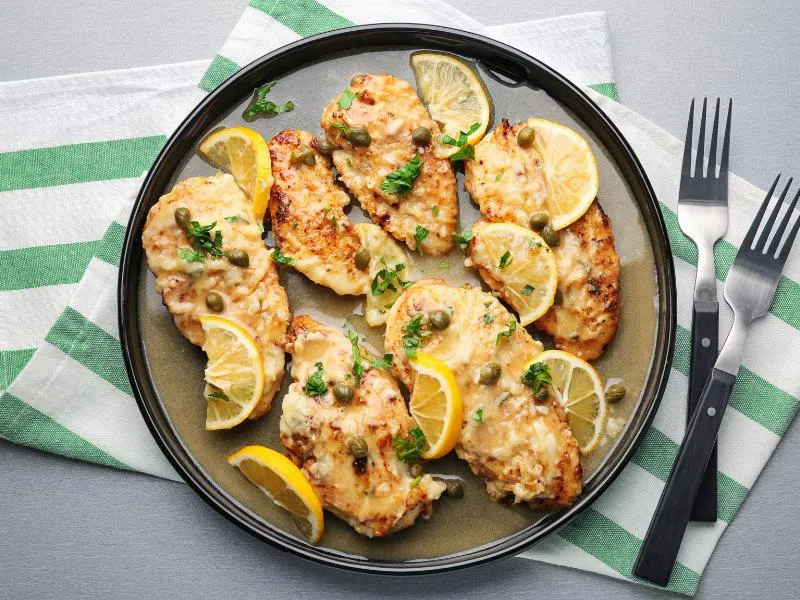Pollo Piccata
Tender chicken cutlets sautéed and served with a bright lemon-caper sauce and butter.
👉 View Authentic Recipe 👈
About This Dish
Pollo Piccata is a classic Northern Italian dish that has become especially popular in Italian-American cuisine. The name “piccata” refers to the cooking method in which meat is sliced, coated, sautéed, and served with a sauce made from the pan drippings. While veal was traditionally used in Italy (Vitello Piccata), chicken became the preferred protein when the dish migrated to America.
The dish features thinly sliced chicken breast cutlets that are dredged in flour, quickly sautéed until golden, and then finished with a distinctive sauce of white wine, fresh lemon juice, capers, and butter. This creates a perfect balance of bright acidity from the lemon, brininess from the capers, and richness from the butter that complements the tender chicken.
Though its exact regional origins are debated, Pollo Piccata shares culinary techniques with dishes from Lombardy and other northern regions of Italy where butter-based sauces are prevalent. It’s typically served as a secondo (main course) alongside vegetables or over pasta to soak up the flavorful sauce, and remains a staple on Italian restaurant menus worldwide.
🧑🍳 Analyzed by CucinaBot
Why This Dish Works
Pollo Piccata succeeds through the perfect balance of fat, acid, and salt. The flour coating creates a light barrier that protects the chicken while forming the foundation for the sauce. The high-acid lemon juice cuts through the richness of the butter, while the briny capers provide bursts of salt that amplify flavors. This combination creates the culinary principle of “brightness” that makes each bite refreshing despite the dish’s richness.
Key Success Factors
- Proper Pounding: Chicken cutlets must be pounded to even 1/4-inch thickness for quick, uniform cooking
- Flour Coating Only: A light flour dredge (not breadcrumbs) creates the ideal surface for sauce adhesion
- Quick Cooking: Sautéing for just 3-4 minutes per side prevents the delicate cutlets from drying out
- Sauce Reduction: The sauce should reduce just enough to slightly thicken without becoming too concentrated
Common Pitfalls
Many modern recipes overload this elegantly simple dish with unnecessary ingredients like heavy cream, garlic, or herbs like oregano and basil, which mask the essential bright flavors of the traditional preparation. Another common mistake is using chicken breasts that are too thick, leading to dry, tough meat or undercooked centers when the exterior is properly browned.
How to Judge Authenticity
When reviewing recipes, look for these markers of authenticity:
- Uses pounded chicken cutlets (not thick breasts)
- Contains only flour for dredging (no bread crumbs or parmesan in coating)
- Features a simple sauce with just lemon, butter, capers, and possibly white wine
- Requires a quick cooking time (under 5 minutes per side)
- Omits non-traditional additions like cream, tomatoes, or excessive herbs